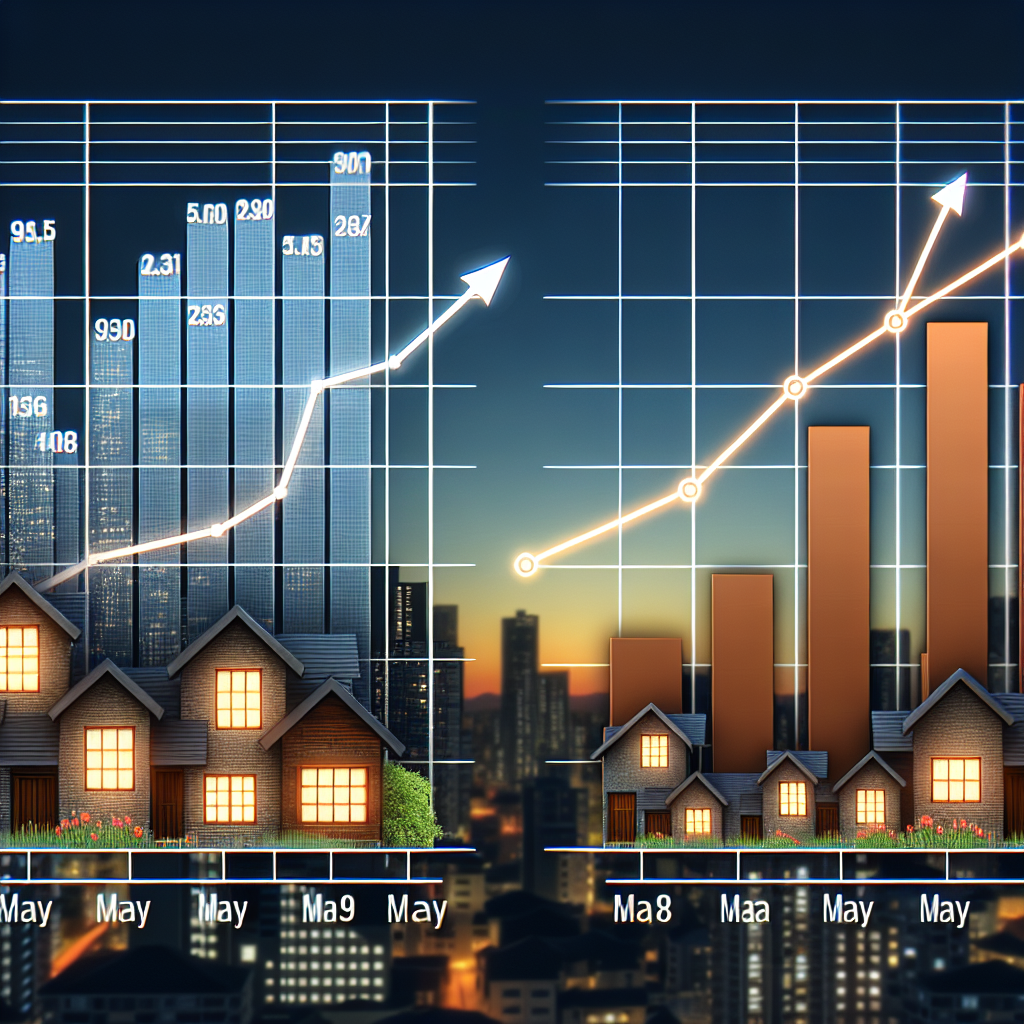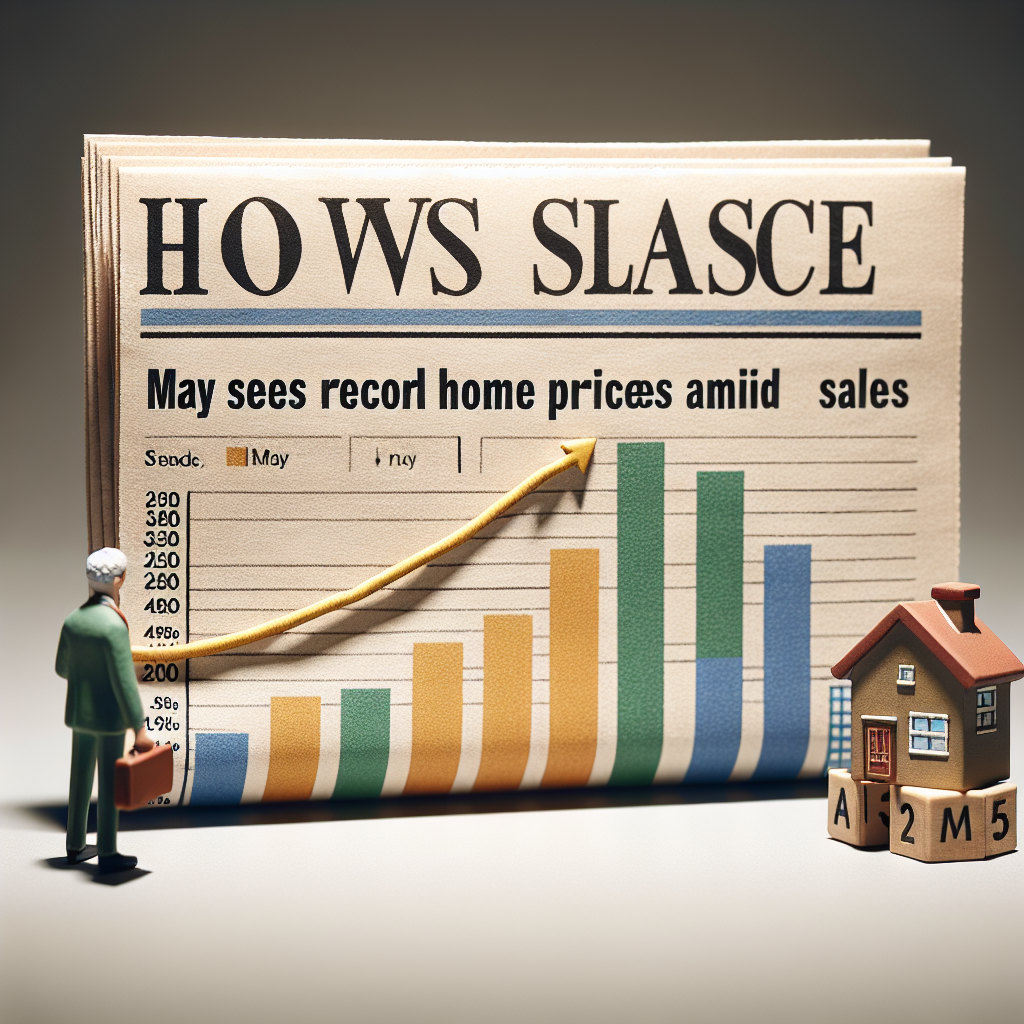-
Table of Contents
- May Sees Record High Home Prices Amid Sales Slowdown
- Understanding the Current Market Dynamics
- Supply and Demand Imbalance
- Economic Factors
- Consumer Behavior
- Case Studies: Regional Variations
- Case Study 1: San Francisco Bay Area
- Case Study 2: Austin, Texas
- Case Study 3: New York City
- Implications for Stakeholders
- Homebuyers
- Sellers
- Investors
- Policymakers
- Conclusion
May Sees Record High Home Prices Amid Sales Slowdown

The real estate market in May has been a paradox of sorts. While home prices have reached unprecedented highs, the volume of sales has seen a noticeable decline. This phenomenon has left many industry experts and potential homebuyers scratching their heads. In this article, we will delve into the factors contributing to this unique market scenario, analyze relevant statistics, and explore the implications for various stakeholders.
Understanding the Current Market Dynamics
To comprehend the current state of the real estate market, it is essential to examine the interplay between supply and demand, economic conditions, and consumer behavior. The following sections will provide a detailed analysis of these factors.
Supply and Demand Imbalance
One of the primary reasons for the surge in home prices is the imbalance between supply and demand. Several factors have contributed to this disparity:
- Limited Housing Inventory: The number of homes available for sale has been significantly lower than the demand. This scarcity has driven up prices as buyers compete for a limited number of properties.
- Construction Slowdown: The construction industry has faced numerous challenges, including labor shortages, rising material costs, and supply chain disruptions. These issues have hindered the ability to build new homes at a pace that meets demand.
- Increased Demand: The pandemic has reshaped housing preferences, with many people seeking larger homes or properties in suburban and rural areas. This shift has intensified demand in certain markets.
Economic Factors
Economic conditions play a crucial role in shaping the real estate market. Several key economic factors have influenced the current scenario:
- Low Mortgage Rates: Historically low mortgage rates have made borrowing more affordable, encouraging more people to enter the housing market. However, this increased demand has also contributed to rising prices.
- Inflation Concerns: Inflationary pressures have led to higher costs for goods and services, including construction materials. This has further exacerbated the supply-demand imbalance.
- Government Policies: Various government policies, such as stimulus packages and tax incentives, have provided financial support to individuals and businesses. While these measures have boosted economic activity, they have also contributed to inflationary pressures.
Consumer Behavior
Consumer behavior has also played a significant role in shaping the current real estate market. Several trends have emerged:
- Remote Work: The rise of remote work has allowed many individuals to relocate to areas with lower living costs or more desirable lifestyles. This has increased demand in certain regions, driving up prices.
- Investment Properties: With stock market volatility and low interest rates, many investors have turned to real estate as a stable and lucrative investment. This has further fueled demand and contributed to rising prices.
- Fear of Missing Out (FOMO): The fear of missing out on favorable mortgage rates and rising home prices has prompted many buyers to enter the market, even if it means paying a premium.
Case Studies: Regional Variations
While the overall trend of rising home prices and slowing sales is evident across the country, regional variations provide a more nuanced understanding of the market dynamics. Let’s explore a few case studies to illustrate these differences.
Case Study 1: San Francisco Bay Area
The San Francisco Bay Area has long been known for its high home prices, driven by a booming tech industry and limited housing supply. In May, the median home price in the Bay Area reached a record high of $1.5 million, a 15% increase from the previous year. However, sales volume declined by 10% as many potential buyers were priced out of the market.
Several factors contributed to this trend:
- Tech Industry Growth: The continued growth of the tech industry has attracted high-income professionals to the area, driving up demand for housing.
- Limited Land Availability: The geographic constraints of the Bay Area, with its surrounding water bodies and protected lands, have limited the availability of land for new construction.
- Remote Work Trends: While some tech companies have embraced remote work, others have required employees to return to the office, influencing housing demand in different parts of the region.
Case Study 2: Austin, Texas
Austin, Texas, has emerged as one of the hottest real estate markets in recent years, attracting both tech companies and individuals seeking a lower cost of living. In May, the median home price in Austin reached $550,000, a 20% increase from the previous year. However, sales volume declined by 8% as inventory remained tight.
Key factors driving this trend include:
- Tech Industry Relocation: Several major tech companies, including Tesla and Oracle, have relocated their headquarters to Austin, bringing an influx of high-income professionals.
- Quality of Life: Austin’s vibrant cultural scene, outdoor recreational opportunities, and relatively affordable cost of living have made it an attractive destination for homebuyers.
- Limited Housing Supply: Despite efforts to increase housing supply, the rapid population growth has outpaced new construction, leading to a competitive market.
Case Study 3: New York City
New York City, one of the most densely populated and expensive real estate markets in the country, has experienced a unique set of challenges. In May, the median home price in Manhattan reached $1.2 million, a 10% increase from the previous year. However, sales volume declined by 12% as the city continued to recover from the pandemic.
Several factors have influenced this trend:
- Pandemic Impact: The pandemic led to an exodus of residents from the city, resulting in a temporary decline in demand. As the city recovers, demand is gradually returning, but inventory remains limited.
- Luxury Market: The luxury real estate market in Manhattan has seen significant activity, with high-net-worth individuals seeking prime properties. This has driven up median prices.
- Remote Work Trends: The shift to remote work has allowed some residents to relocate to suburban areas, impacting demand within the city.
Implications for Stakeholders
The current real estate market dynamics have far-reaching implications for various stakeholders, including homebuyers, sellers, investors, and policymakers. Let’s explore these implications in detail.
Homebuyers
For potential homebuyers, the record high home prices present several challenges:
- Affordability: The rising prices have made homeownership less affordable for many individuals, particularly first-time buyers. This has led to increased competition and bidding wars.
- Financing Challenges: While low mortgage rates have made borrowing more affordable, the high home prices mean that buyers need larger loans, which can be challenging to secure.
- Limited Inventory: The scarcity of available homes has limited buyers’ options, forcing them to make quick decisions and potentially settle for properties that may not fully meet their needs.
Sellers
For home sellers, the current market conditions offer both opportunities and challenges:
- High Sale Prices: Sellers can benefit from the record high home prices, potentially achieving significant returns on their investments.
- Quick Sales: The competitive market means that homes are selling quickly, often within days of being listed.
- Relocation Challenges: While selling a home may be lucrative, finding a new property to purchase can be challenging due to limited inventory and high prices.
Investors
Real estate investors are also impacted by the current market dynamics:
- Investment Opportunities: The rising home prices and strong demand present opportunities for investors to achieve significant returns on their investments.
- Rental Market: The high home prices have led to increased demand for rental properties, providing a steady income stream for investors.
- Market Volatility: The potential for market corrections and economic uncertainties pose risks for investors, requiring careful analysis and strategic planning.
Policymakers
Policymakers play a crucial role in addressing the challenges and opportunities presented by the current real estate market:
- Affordable Housing Initiatives: Policymakers can implement measures to increase the supply of affordable housing, such as incentivizing new construction and providing subsidies for low-income buyers.
- Regulatory Reforms: Streamlining zoning and permitting processes can help expedite new construction and alleviate supply constraints.
- Economic Policies: Addressing inflationary pressures and ensuring stable economic conditions can help create a more balanced real estate market.
Conclusion
The real estate market in May has been characterized by record high home prices and a slowdown in sales volume. This unique scenario is the result of a complex interplay between supply and demand imbalances, economic factors, and shifting consumer behavior. Regional variations further illustrate the diverse dynamics at play across different markets.
The implications of these trends are far-reaching, affecting homebuyers, sellers, investors, and policymakers. While the current market conditions present challenges, they also offer opportunities for strategic decision-making and innovative solutions.
As we move forward, it will be essential for all stakeholders to stay informed, adapt to changing conditions, and work collaboratively to create a more balanced and sustainable real estate market. By understanding the underlying factors driving these trends, we can better navigate the complexities of the housing market and make informed decisions that benefit all parties involved.








